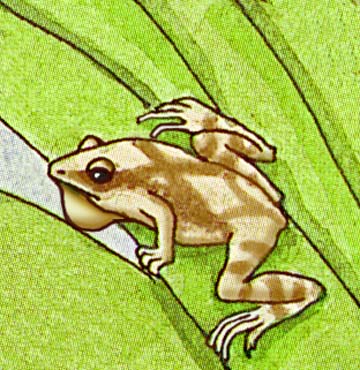

They are found in the eastern part of Southern Canada and the U.S.
They live on or near ponds, wetlands, marshes, wet forests and swamps.
They are tiny frogs, less than 2 inches long. They are tan-colored with a lighter X marking on their backs. They have tiny suction pads on their toes to help them cling to plants. They make their peeping sound with an air sac under their chin. It is such a loud call that many peepers together can be heard for a long distance away.
They are one of the first frogs to start singing in the spring.
They eat insects and spiders.
They are eaten by snakes, fish, larger frogs and birds.
They lay their eggs in the water, attached to an anchored plant. The tadpoles that hatch out are bigger than the adult frog.
Kingdom: Animalia
Phylum: Chordata
Subphylum: Vertebrata
Class: Amphibia
Order: Anura
Family: Hylidae
Genus: Pseudacris
Species: P. crucifer
When you research information you must cite the reference. Citing for websites is different from citing from books, magazines and periodicals. The style of citing shown here is from the MLA Style Citations (Modern Language Association).
When citing a WEBSITE the general format is as follows.
Author Last Name, First Name(s). "Title: Subtitle of Part of Web Page, if appropriate." Title: Subtitle: Section of Page if appropriate. Sponsoring/Publishing Agency, If Given. Additional significant descriptive information. Date of Electronic Publication or other Date, such as Last Updated. Day Month Year of access < URL >.
Amsel, Sheri. "Frog (Spring Peeper)" Exploring Nature Educational Resource ©2005-2024. December 16, 2024
< http://www.exploringnature.org/db/view/60 >

